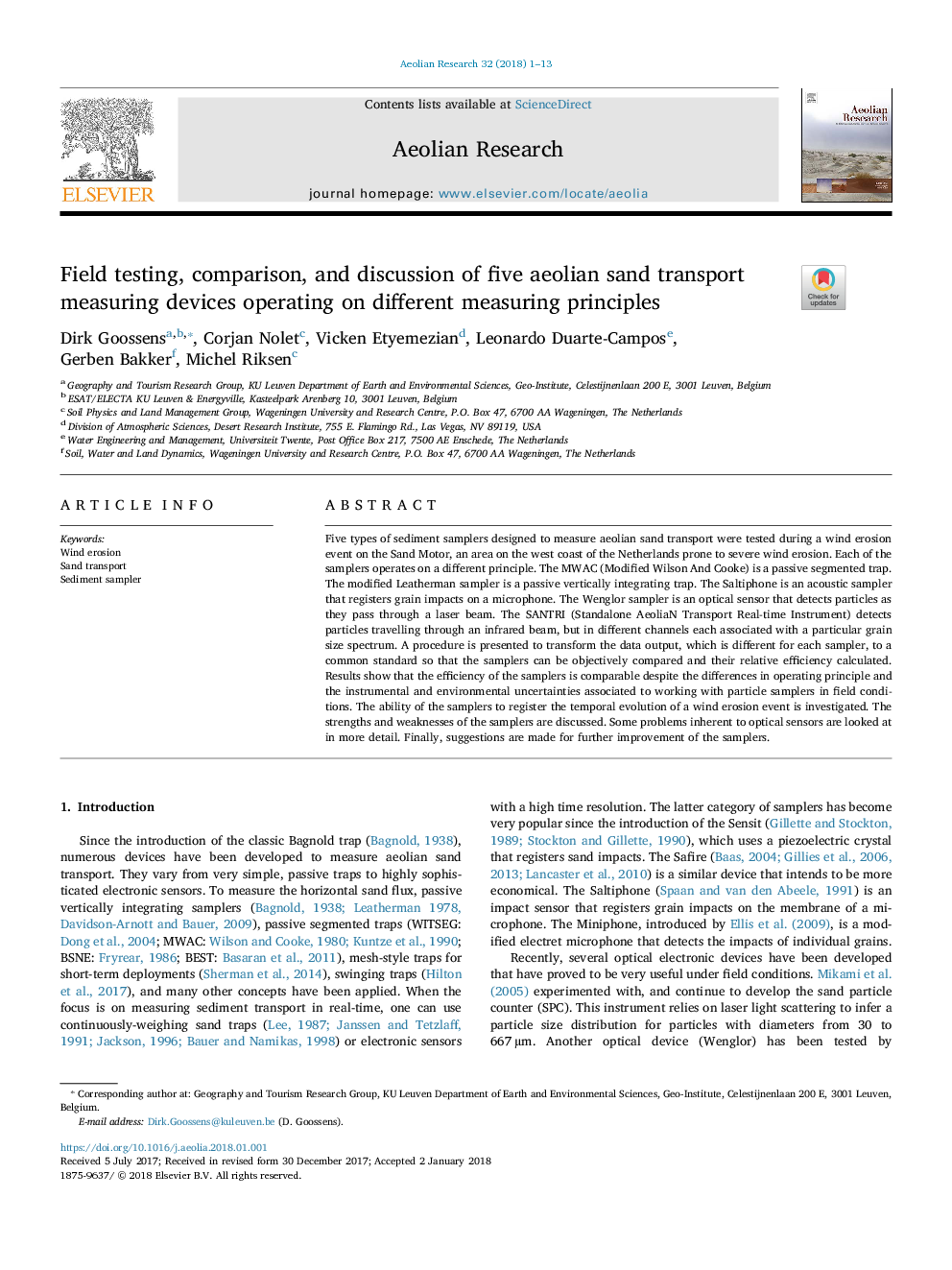ترجمه فارسی عنوان مقاله
آزمایش، مقایسه، و بحث در مورد پنج دستگاه اندازه گیری حمل و نقل شن و ماسه عامل در اصول اندازه گیری مختلف
عنوان انگلیسی
Field testing, comparison, and discussion of five aeolian sand transport measuring devices operating on different measuring principles
| کد مقاله | سال انتشار | تعداد صفحات مقاله انگلیسی |
|---|---|---|
| 83821 | 2018 | 13 صفحه PDF |
منبع

Publisher : Elsevier - Science Direct (الزویر - ساینس دایرکت)
Journal : Aeolian Research, Volume 32, June 2018, Pages 1-13
ترجمه کلمات کلیدی
فرسایش باد، حمل و نقل شن و ماسه، نمونه گیری رسوب،
کلمات کلیدی انگلیسی
Wind erosion; Sand transport; Sediment sampler;

